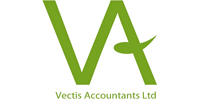How to work out what motor expenses you can claim if you're self employed
When are motor expenses classed as an "allowable expense"?
An expense is allowable as a deduction only if it is incurred "wholly and exclusively" for business purposes.
Motor expenses are therefore classed as an "allowable expense" if the mileage is wholly and exclusively for business purposes. It can include travel to a temporary work place but it doesn't include:
- normal travel between home (or anywhere that is not a workplace) and your permanent workplace
- private travel
Calculating motor expenses
There are two ways of working out motor expenses if you're self employed:
- a fixed rate for each mile travelled on business, using HMRC 'simplified expenses'
- actual expenses, using detailed records of business and private mileage (the 'actual cost method')
Simplified expenses
Using simplified expenses, you claim a flat rate allowance for business mileage. You can use simplified expenses for cars, vans or motorcycles.
If you use simplified expenses, you cannot also claim for motoring costs (such as insurance or fuel). You cannot claim simplified expenses if you have already claimed a capital allowance for the purchase of the vehicle.
|
Approved mileage rates |
||
|---|---|---|
|
From 2011/12 |
First 10,000 business miles in the tax year |
Each business mile over 10,000 in the tax year |
|
Cars and vans |
45p |
25p |
|
Motor cycles |
24p |
24p |
We strongly recommend that if you use this method you keep a detailed record of all journeys, including date, purpose and destination. This is not too onerous if you keep this as part of your diary.
The actual cost method
If you choose to use the actual cost method instead, you must keep records of all motoring costs. This may include:
- fuel/oil
- insurance
- vehicle tax
- repairs/servicing
- parts
- recovery subscription
- MOT
If the vehicle is used for both private and business purposes, you can only claim for the proportion of the costs that relate to the business use. Therefore you also need to keep track of your business mileage in the year, compared to your total mileage for the year. This will give you the proportion of costs that relate to business use.
You must make a note of the mileage reading at the start and end of your accounting period when you use this method.
Under the actual cost method (but not the mileage rate method), you can also claim capital allowances, but these are restricted to the business use of the vehicle. For example, if the car is used equally for business and private use, you can only claim 50% of the full capital allowance.
If you use a bicycle in your business, you can claim actual expenses and capital allowances in the same way. You cannot use simplified expenses to claim a mileage allowance for business use of a bicycle.
A note of caution
It is recommended that for the first year of any new vehicle, or a new business, you keep track of both your business mileage and your actual motor expenses to work out which method to use.
What is allowable depends on the individual circumstances, and it's always best to ask an accountant if you're unsure.
